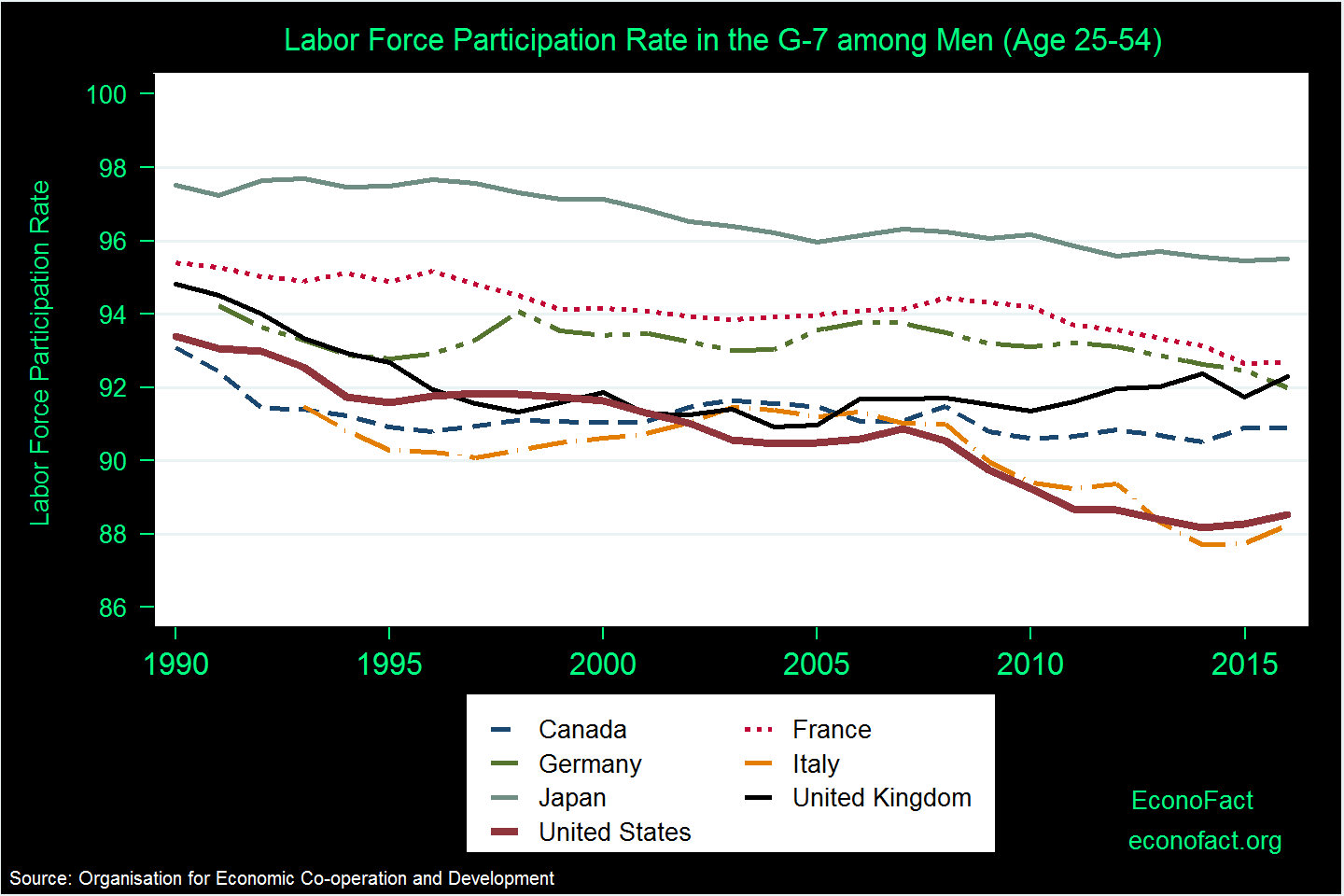Where Have All the (Male) Workers Gone?
University of Texas, Austin and Harvard Kennedy School
The Issue:
Does the unemployment rate of 4.4 percent provide an accurate picture of the health of the United States’ economy? This is almost a full percentage point below its pre-recession average. But the unemployment rate only accounts for those who are actively looking for a job. If an unemployed worker becomes discouraged and stops searching for work altogether, the unemployment rate would actually drop.
Studying the trends among people who have left the labor force altogether — those who are neither working nor searching for a job — highlights challenges still facing some groups, particularly men of prime working age.
The Facts:
- The proportion of adults engaged in the labor market rose steadily during the second half of the 20th century. But the rise peaked at a little over 67 percent in early 2000 and has trended down since then, reaching a near 40-year low of around 62 percent in 2015. The U.S. labor force participation rate measures the proportion of the civilian population who are 16 or older and are either working or actively looking for work. It does not include adults who are inmates of institutions (penal, mental facilities, homes for the aged) or those who are on active duty in the Armed Forces.
- Broad demographic trends — including the baby boom generation’s entrance into their prime working years and the steady increase in the share of women taking paid jobs — helped fuel the steady increase in overall participation between the 1960s and 2000. In recent years, however, as the baby boom generation has approached retirement age, demographics have worked in the opposite direction.
- When one examines the prime-age population — those aged 25-54 — we see a surprising pattern. Women’s labor force participation increased until 2000, at which point it began to decline. In contrast, male labor force participation has experienced a steady decline beginning almost six decades ago. The share of men aged 25 to 54, who are either working or actively searching for work has fallen from a high of 98 percent in the 1950s to 88 percent today (see chart). This means that over 7 million men in their prime working years are neither working nor looking for work. The decline has been most pronounced among those with less education. Among those with a high school degree or less, participation declined from over 96 percent in the early 1960s to 83 percent last year.
- Reduction in labor supply — men choosing not to work for a given set of labor market conditions — can explain relatively little of the long-run trends. Increased use of disability benefits is one possible explanation; however, Social Security Disability Insurance (SSDI) receipt has increased by 1.5 percentage points since 1967, compared to an 8.4 percentage point decline in the prime-age male labor force participation rate over this period. Recent research highlights the potential role of recent improvements in leisure technology (a.k.a. video games) in explaining the decline among younger men; however, this cannot explain the longer-run trends we observe. Overall, it does not appear that prime-age men are choosing not to work because they are better off financially; in 2015, 34 percent of prime-age men not in the labor force lived below the poverty line compared to 9 percent of prime-age men overall (authors' calculations based on IPUMS CPS data).
- Declining demand for low-skilled labor seems likely to be an important part of the explanation. Since the 1980s, the relative wages of low-skilled workers has been steadily declining, reducing the relative benefits of participating in the labor market. Research has suggested the declining demand for middle-skilled occupations may have led middle-skilled workers to displace lower-skilled workers in the low-skilled jobs, inducing low-skilled workers to leave the labor force. A recent study by economists at the Board of the Federal Reserve and the Federal Reserve Bank of Cleveland found that, since 1985, participation rates for less-educated adults fell further in states with greater declines in middle-skilled, middle-wage employment shares.
- The different patterns we see across countries — despite common experiences of globalization and technological change — suggest a role for labor market institutions. The prime-age male participation rate has also been falling in other advanced economies, but it is notably low for the U.S., which ranked third from the bottom in the OECD for 2016 and which saw one of the largest declines in participation over the last 25 years. While the United States is known to have a very flexible labor market, it rates very low in terms of labor market support. The U.S. offers limited re-employment support for workers receiving unemployment insurance and overall spends very little (0.1 percent of GDP relative to 0.6 percent average in the rest of the OECD) on active labor market policies targeted to keep workers attached to the labor market.

What this Means:
The declining labor force participation rate, especially for prime-working-age men, means that millions of Americans are neither working nor looking for work. This has obvious detrimental effects on those affected, but this also suggests that the economy as a whole may not be operating at its full capacity, despite a very low unemployment rate. A smaller labor force limits overall GDP growth and adversely affects funding of Social Security. The reasons why many prime-aged men are dropping out of the labor force are not well understood and many factors can be at play. Policies such as strengthening the unemployment insurance system and promoting education and training that encourage unemployed workers to keep searching for work and support those who re-enter the workforce are important, both for the individuals who are attempting to return to work and for society as a whole.
Topics:
EmploymentLike what you’re reading? Subscribe to EconoFact Premium for exclusive additional content, and invitations to Q&A’s with leading economists.

